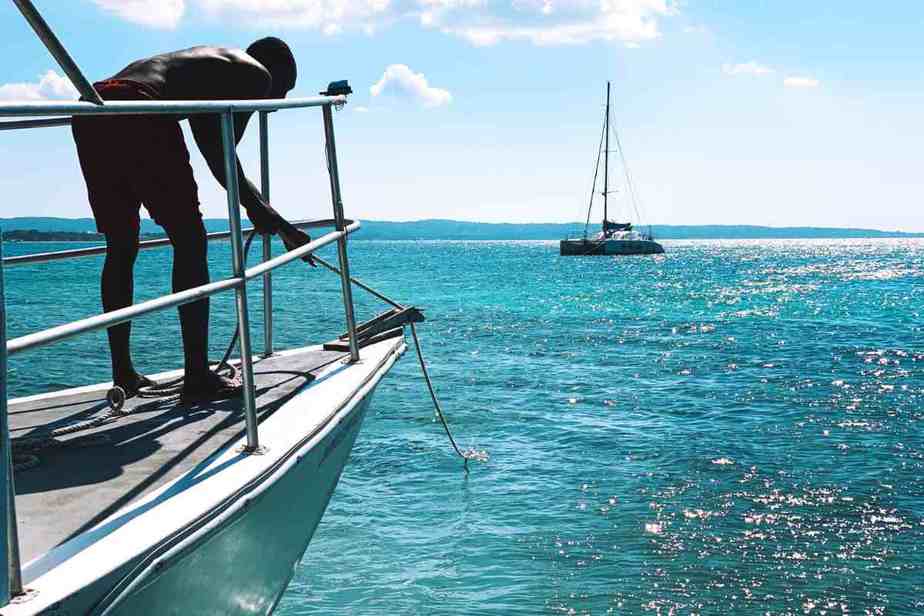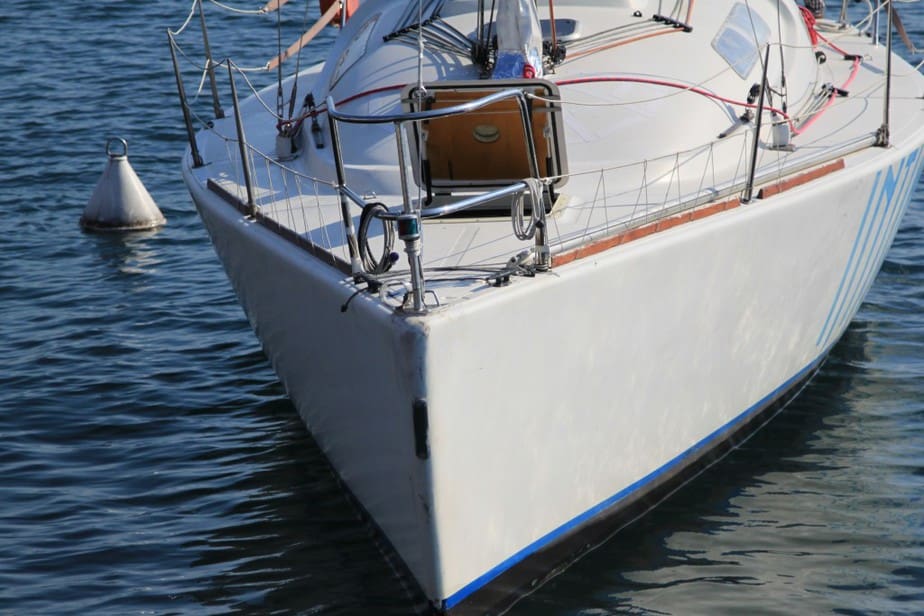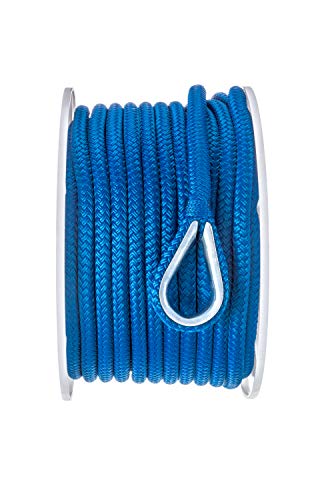How Long Can You Leave A Boat Anchored In One Place? 5 Must-Know Tips
Whether sailing short distances or planning a trip for a great distance, it is important to know certain rules and regulations regarding how long a boat can be anchored. Anchoring a boat is not mandatory or regulated but is recommended to maintain at least one anchor or more on a boat.

Table of Contents
How Long Can You Anchor A Boat?
How long can you anchor a boat? Essentially, there is no law stating how long a boat can be anchored. Though anchoring is done for relatively short periods of time, with the proper size equipment, your vessel can survive being anchored for months or longer.
Other factors may influence how long boaters can anchor their boat. Policies may apply differently if you are anchoring on a dock in a marina compared to open water; therefore, location has an impact on the length of time. Eventually, you may need to come back to dry land for supplies if you are anchored in open water as well.
Proper Anchor Equipment
Not every boat is made equal, just as same as anchors. The proper gear will depend on the size of your vessel. There are larger boats that require heavier gear to compensate for their heavy displacement, especially when considering wind resistance can make even a good holding come loose.
In some situations, when space is provided, people will carry two anchors to prevent anchor drag. One they refer to as the lunch-hook, and the other a larger anchor for storms. As you can imagine, the lunch-hook is for calmer water when the weather is fair. The second anchor is for when those aboard are sleeping or battling through a storm.
The proper equipment will contain an anchor, an anchor alarm, the rode (chain and line), and connecting elements. When choosing which anchor is correct for your boat, some factors to consider include:
Boat size
- Size and weight influence the size anchor you’ll need
Demographics
- Where you will be anchoring plays an important role
- Is the seabed hard rock or soft mud or sand?
- Resources available to determine these questions
Weather Conditions
- High winds, tidal waves create anchoring issues
Location
- Anchoring offshore or open water
- Calm areas as opposed to open oceans
Anchoring and Leaving a Boat Unattended
Although you may be skeptical if you are new to boating, leaving a boat unattended on an anchor is more common than not. However, you should take caution since anchoring is meant for only short periods of time.
Problems could arise if you do not have the proper equipment, and if left unattended when those problems occurred, your boat could travel on without you.
Problems could arise if you didn’t set the anchor correctly. A strong current or wind could cause the boat to swing, and worst-case scenario undoes the anchor completely. That is why it is important to carefully set the anchor properly with the correct size equipment for your vessel.
Anchoring and leaving your boat unattended is at your own risk. It’s not recommended you leave your vessel anchored for long periods of time. Especially if you are in an area if you are unaware of the property or laws restricting anchorage.
Anchoring in Public Areas
Where most anchoring is free, some public harbors worldwide can save a slight fee. Some towns and cities have restrictions set for anchorage. For longer stays, leaving your vessel unattended, you would have to investigate mooring. The fees vary per destination.
Just like anchoring, moorings can come with a fee in a public area or an area regulated by a town.
Some commercial mooring areas have restrictions for how close you can anchor near the designated mooring areas.
It may pay off to study your destinations anchorage restrictions prior to setting sail.

Locations Restricting Anchoring
In the United States, the east coast has some restrictions as to where you can anchor at all. It became a big topic of discussion in Florida when some counties started creating anchoring laws.
Some of those laws include:
- Cannot anchor within 150 feet of any marina, boatyard, launching vessel
- Cannot anchor within 300 feet of facilities for servicing and repairs
- Cannot anchor within 100 feet from marked boundaries of public mooring
- Cannot anchor to an unpermitted or unlawful object that is affixed to the bottom of the waters
- Cannot anchor if your vessel is at risk of taking on water with no means to dewater.
There are acceptions if your boat has mechanical issues and if the weather is poses unreasonable risk to the vessel or people aboard. Or if there is some contractual agreement between the operator and public mooring.
These laws are enforced by the sheriffs of various counties and municipal police officers of the Division of Law Enforcement of the Fish and Wildlife Conservation Commission. Fees are associated with the laws if broken.
Areas like Miami-Dade and Broward counties have been affected by these reinforcements. An overnight anchoring ban has been set forth in Middle River, Biscayne Bay, and Sunset Lake. They allow anchoring during the day in these areas but have restrictions after sunset and prior sunrise. These laws are in order because these areas are more populated and have narrow waterways.
When deciding where to anchor plan as if you are staying overnight for best safe practices. Factors to note include distancing yourself from land, and your anchoring location will reduce waves to build up and preventing the anchor from loosening, potentially creating significant issues at hand.
However, in addition to deciding anchor plans, be sure to knowledge yourself on the latest rules and regulations before you set your anchor on property that could cause you a visit of the local states game commissions.
For more information regarding Florida laws, please refer to the link below:
Florida is just an example of the anchorage requirements regulated within the United States. Each state has its own set of rules and regulations they follow for anchoring. These restrictions can impact how long you are able to anchor in these locations.
Around the World Anchorage Restrictions
When planning a trip, it would be beneficial to review the Code of Federal Anchorage Regulation. The link provided below provided valuable information on special anchorage areas and anchorage grounds across the United States.
https://www.govinfo.gov/content/pkg/CFR-2019-title33-vol1/xml/CFR-2019-title33-vol1-part110.xml
Environmental Restrictions
In some protected environmental areas, there are restrictions on how close you can anchor to a shoreline.
Additionally, there are some areas that have no anchoring zones. Be cautious and aware for these signs and warning to ensure you do not anchor in these zones, which are typically seen near commercial water traffic areas or for water sport events.
https://improvesailing.com/questions/can-i-moor-and-anchor-my-boat-anywhere
Open Water Anchoring
Although there are no fees or regulations set for how long you can anchor your vessel in open water, eventually, you will need to come back to land for supplies. Resources like freshwater are important for daily living, so that is one resource you will need to return for.
There are needs that require attention, like pumping sewage properly. There are laws and regulations that reinforce to use a holding tank or pump-out stations to dispose your waste. That includes oil waste. Do not supply the habitats that float your boat with harmful toxins and waste. Be courteous to the environment.
Areas in moorings and public harbors have pump-out stations to dispose waste properly. Be sure on your trip you plan accordingly, so you know where resources are available.
Also, open water could mean deep water, so you will want to prepare accordingly that you have the proper ground tackle to hold you for all the conditions that influence anchorage.



